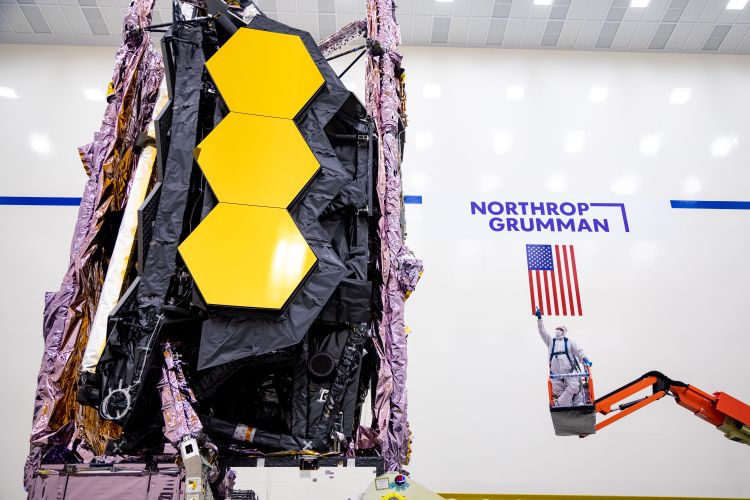NASA’s James Webb Space Telescope, built in partnership with Northrop Grumman Corporation, is one step closer to being fully commissioned. Enabled by Northrop Grumman cryocooler technology, the system has cooled the Mid-Infrared Instrument (MIRI) to its operational cryogenic temperature, a critical step toward first science.
“Reaching MIRI’s operational temperature is a major step toward science and all the astounding discoveries Webb will uncover for years to come,” said Charlie Atkinson, chief engineer, James Webb Space Telescope, Northrop Grumman. “The success of this remarkable milestone is a testament to the dedication of engineers and scientists and the many years of practice.”
Webb’s cryocooler is an advanced machine that operates as an internal refrigerator to establish and maintain the right cryogenic temperature for the MIRI. The cryocooler keeps sensors extremely cold so the MIRI can observe the skies and capture light from billions of years ago. To date, Northrop Grumman has delivered over 50 space flight cryocoolers with an accumulated 300 years of combined on-orbit operations.

Webb’s suite of scientific instruments, MIRI included, spent the last three months passively cooling off in deep space to 90 kelvin – minus 298 Fahrenheit or minus 183 Celsius – with the help of Webb’s giant sunshield. The size of a tennis court, the sunshield protects the telescope from light and heat emitted from the sun, Earth and moon, and the observatory itself. Last week, Webb’s MIRI reached its operating cryogenic temperature of below seven kelvin, which is minus 448 Fahrenheit or minus 266 Celsius.
Taking Webb from the drawing board and making it a reality was an enormous collaborative effort between NASA, international partners, and industry. As the largest, most complex and powerful space telescope ever built, Webb required 10 technological inventions, including revolutionary optics, detectors and MIRI’s advanced cryocooler.
Northrop Grumman leads the industry team for the program and NASA heads an international partnership that includes both the European Space Agency and Canadian Space Agency. Goddard Space Flight Center manages the Webb Telescope project, and the Space Telescope Science Institute is responsible for science and mission operations, as well as ground station development.
Northrop Grumman is a technology company, focused on global security and human discovery. Our pioneering solutions equip our customers with capabilities they need to connect, advance, and protect the U.S. and its allies. Driven by a shared purpose to solve our customers’ toughest problems, our 90,000 employees define possible every day.
This article first featured on Northrop Grumman’s website. Read the original article.










